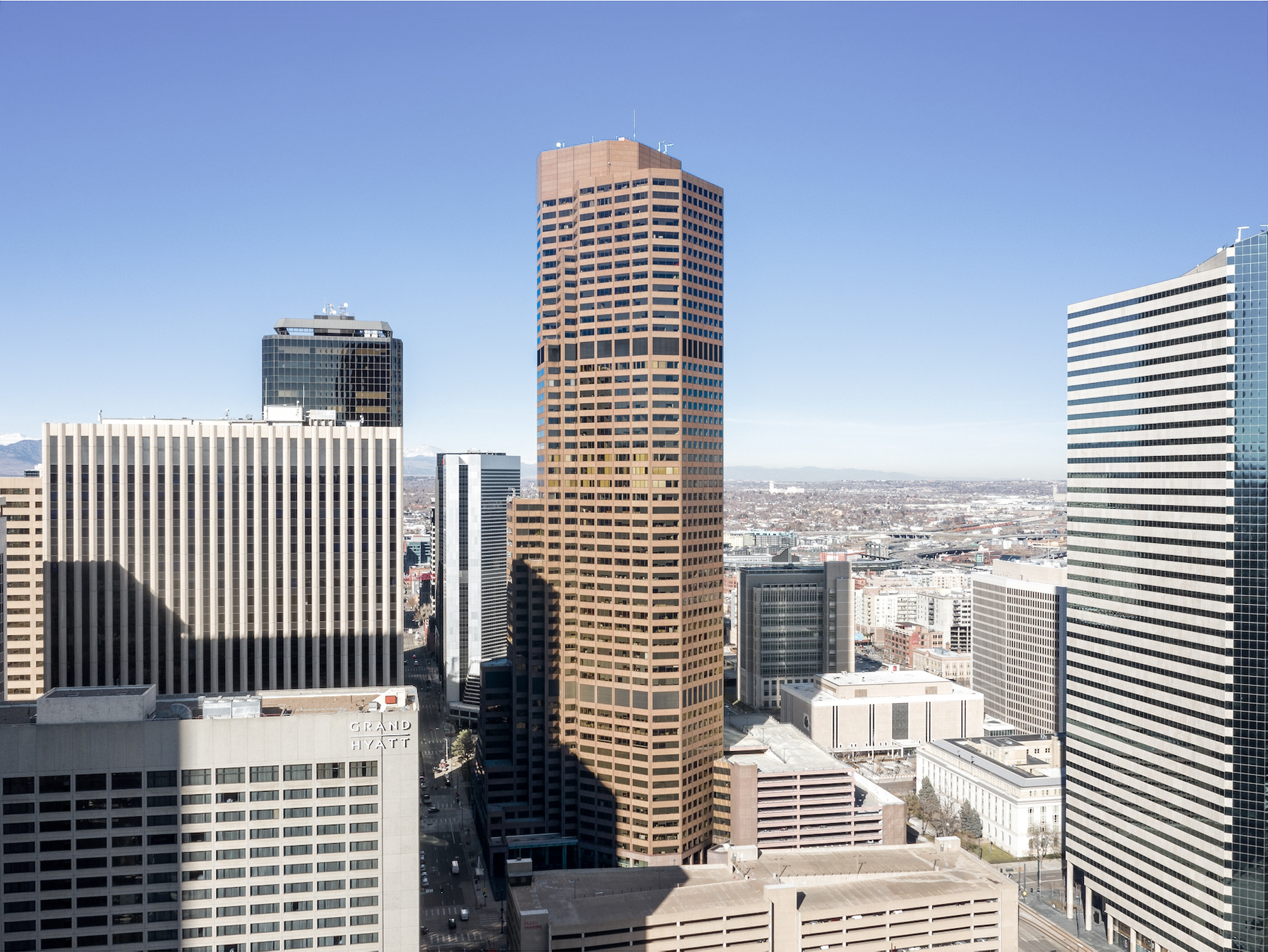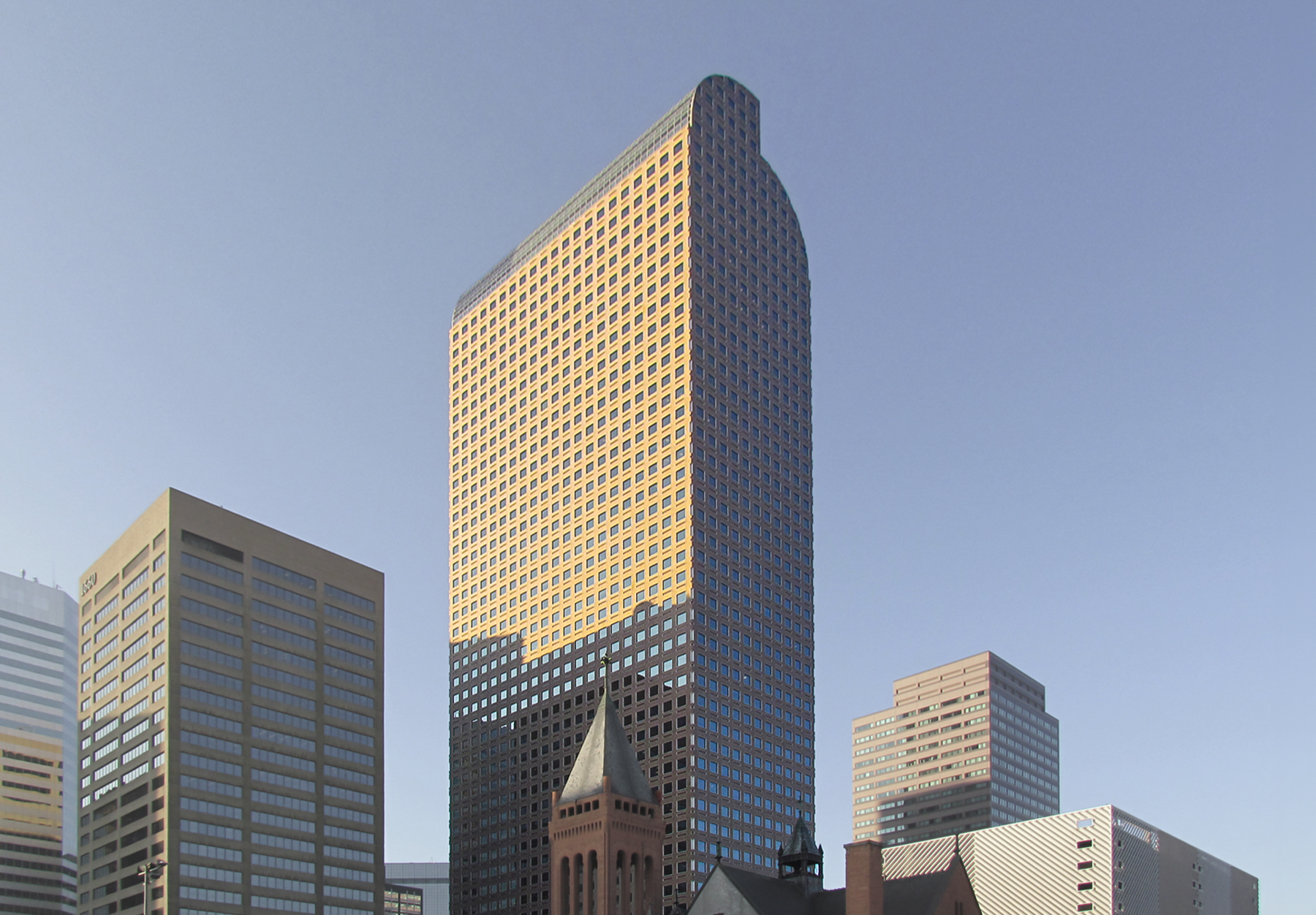The 1801 California Building is a Postmodernist skyscraper designed by Metz, Train & Youngren, and built in 1983 in Denver, CO.
1801 California Building is not the only name you might know this building by though. It is common for companies to want to attach their names to iconic buildings when they move in, or for the general public to come up with nicknames, and this one is no exception. The building has changed names several times over the years, and is also known as:
- United Bank Center between 1983 and 1989.
- US West Tower between 1990 and 2000.
- Qwest Tower between 2000 and 2011.
- CenturyLink Tower between 2011 and 2015.
- 1801 California Building from 2015 until this day.
Its precise street address is 1801 Californa Street, Denver, CO. You can also find it on the map here.
The building underwent a major restoration in 2014. The architect commissioned to undertake this restoration was Weitz.


